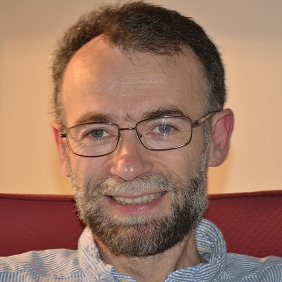Circadian Rhythms: Molecular and Physiological Mechanisms
A special issue of International Journal of Molecular Sciences (ISSN 1422-0067). This special issue belongs to the section "Molecular Biology".
Deadline for manuscript submissions: closed (1 April 2019) | Viewed by 153505
Special Issue Editor
Special Issue Information
Dear Colleagues,
Circadian rhythms are daily, molecular, physiological and behavioral variations with a period close to 24 h. These variations are controlled by endogenous clocks found in most living organisms. Circadian clocks generate an internal temporal organization to segregate incompatible functions on a daily basis and allow organisms to anticipate and/or be in phase with predictable environmental changes. Molecular mechanisms underlying circadian oscillations are self-sustained, entrainable and temperature-compensated. Furthermore, circadian clocks are tightly interconnected with cellular metabolism. As a consequence, circadian disturbances are frequently associated with metabolic disturbances.
This Special Issue, “Circadian rhythms: Molecular and Physiological Mechanisms”, of the International Journal of Molecular Sciences will comprise a selection of research papers and reviews covering various aspects of molecular and cellular biology of circadian clocks in different biological models. Contributions on the interactions between cellular metabolism and circadian clocks, as well as their pathophysiological implications for health, will be welcome. Studies on bioactive molecules and nutraceutical treatments modulating circadian rhythms will also be considered.
Dr. Etienne Challet
Guest Editor
Manuscript Submission Information
Manuscripts should be submitted online at www.mdpi.com by registering and logging in to this website. Once you are registered, click here to go to the submission form. Manuscripts can be submitted until the deadline. All submissions that pass pre-check are peer-reviewed. Accepted papers will be published continuously in the journal (as soon as accepted) and will be listed together on the special issue website. Research articles, review articles as well as short communications are invited. For planned papers, a title and short abstract (about 250 words) can be sent to the Editorial Office for assessment.
Submitted manuscripts should not have been published previously, nor be under consideration for publication elsewhere (except conference proceedings papers). All manuscripts are thoroughly refereed through a single-blind peer-review process. A guide for authors and other relevant information for submission of manuscripts is available on the Instructions for Authors page. International Journal of Molecular Sciences is an international peer-reviewed open access semimonthly journal published by MDPI.
Please visit the Instructions for Authors page before submitting a manuscript. There is an Article Processing Charge (APC) for publication in this open access journal. For details about the APC please see here. Submitted papers should be well formatted and use good English. Authors may use MDPI's English editing service prior to publication or during author revisions.
Keywords
- Circadian clock
- Clock gene
- Intra-cellular regulation
- Small molecule modifiers
- Clock-associated pathologies
- Chronotherapy
Benefits of Publishing in a Special Issue
- Ease of navigation: Grouping papers by topic helps scholars navigate broad scope journals more efficiently.
- Greater discoverability: Special Issues support the reach and impact of scientific research. Articles in Special Issues are more discoverable and cited more frequently.
- Expansion of research network: Special Issues facilitate connections among authors, fostering scientific collaborations.
- External promotion: Articles in Special Issues are often promoted through the journal's social media, increasing their visibility.
- Reprint: MDPI Books provides the opportunity to republish successful Special Issues in book format, both online and in print.
Further information on MDPI's Special Issue policies can be found here.






